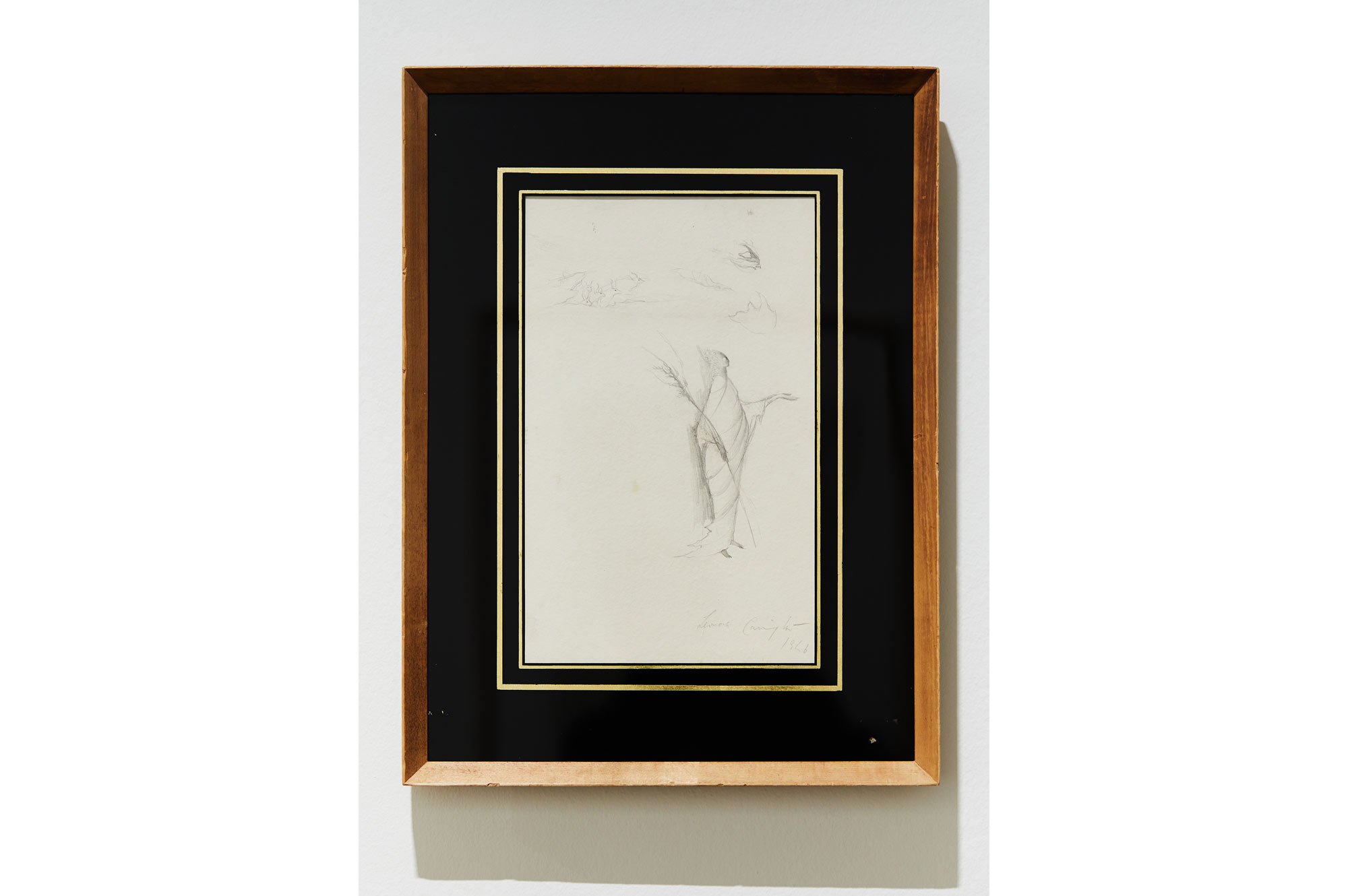Leonora Carrington, Sans titre / Untitled, 1942
Pencil on paper
Courtesy of Mark Seidenfeld
During the 1940s, Leonora Carrington (1917 – 2011, UK) made a series of artworks marked by her worrisome journeys throughout war-torn Europe, where she got to know the Surrealists in Paris and was later committed to Doctor Morales’ mental hospital in Santander, before fleeing to the American continent.
Her drawings and paintings testify to the anxiety and loneliness she felt at the time, but also to an ability to find strength and freedom in her imagination. Carrington fabricated a mythological universe where enchanted women exercise magical powers in collaboration with the animal, vegetal and mineral aspects of nature. One of her most frequently recurring motifs is a wild horse, which equally symbolised male and female sexuality, illustrating her reconceptualisation of gender roles as well as women’s position within culture.
The horse serves as Carrington’s alter ego and at the same time as a guardian figure, while the bird was a guardian animal that stood for Carrington’s beloved Max Ernst. In this drawing from 1942, galloping horses float on clouds like angels in religious paintings. One of them is a sacrament for the Surrealist ideal of madness – a state through which women in particular were afforded mysterious and revolutionary powers at the cost of social ostracism.









 Sans titre Untitled 1942, Leonora Carrington © Mark Seidenfeld. Photo ©Jeanchristophe Lett /Manifesta 13 Marseille
Sans titre Untitled 1942, Leonora Carrington © Mark Seidenfeld. Photo ©Jeanchristophe Lett /Manifesta 13 Marseille